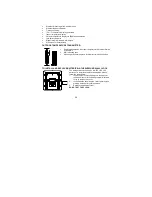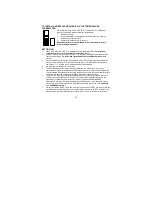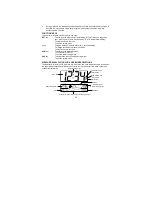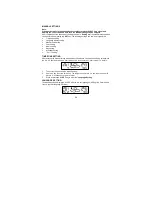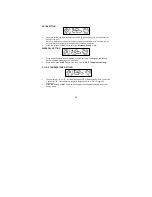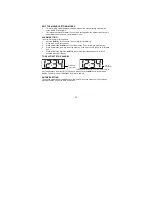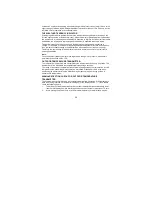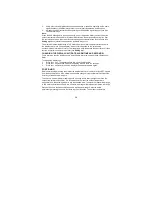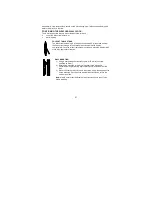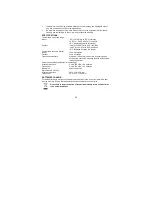
29
mistake the new location as being a possible change in air-pressure when really it is due to the
slight change of altitude. Again, disregard weather forecasts for the next 12 to 24 hours, as this
will allow time for operation at a constant altitude.
THE WEATHER TENDENCY INDICATOR
Working together with the weather icons are the weather tendency indicators (located on the
left and right hand side of the weather icons). When the indicator points upwards, it means that
the air-pressure is increasing and the weather is expected to improve, but when indicator points
downwards, the air-pressure is dropping and the weather is expected to become worse.
Taking this into account, one can see how the weather has changed and is expected to
change. For example, if the indicator is pointing downwards together with cloud and sun icons,
then the last noticeable change in the weather was when it was sunny (the sun icon only).
Therefore, the next change in the weather will be cloud with rain icons since the indicator is
pointing downwards.
Note:
Once the weather tendency indicator has registered a change in air pressure, it will remain
permanently visualized on the LCD.
OUTDOOR TEMPERATURE TRANSMITTER:
The temperature is measured and transmitted to the weather wall clock every 4 seconds. The
weather wall clock will update the temperature display every 4 seconds.
The range of the outdoor temperature transmitter may be affected by the temperature. At cold
temperatures the transmitting distance may be decreased. Please bear this in mind when
positioning the transmitter. Also the batteries may be reduced in power during periods of
extreme cold temperatures.
868MHz RECEPTION CHECK FOR OUTDOOR TEMPERATURE
TRANSMITTER
The Weather wall clock will receive the temperature data within 4 seconds. If the temperature
data is not being received 2 minutes after setting up (or the display shows “- - -”), then please
check the following points:
1.
The distance of the Weather wall clock or outdoor temperature transmitter should be at
least 2 meters away from any interfering sources such as computer monitors or TV sets.
2.
Avoid placing the receiver onto or in the immediate proximity of metal window frames.


